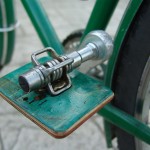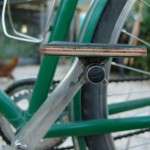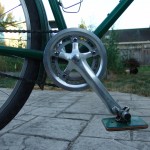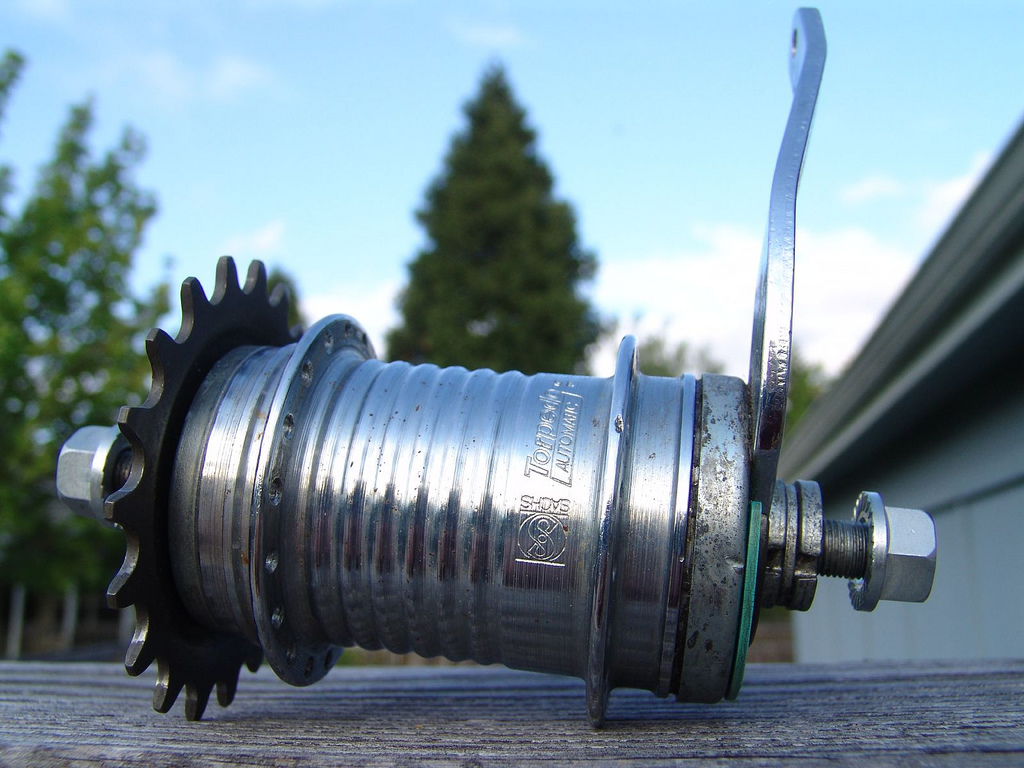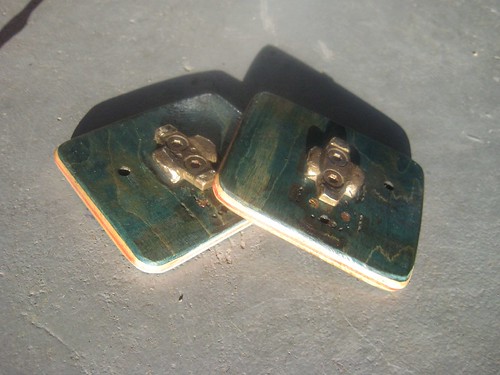EDIT 2022:
Just use Jan’s calculator:
Run it for your bikes and write the pressure on the tires or the rims.
Ignore all this old stuff:
Here’s a short overview of tire pressure on the Problem Solver’s blog. It’s a little more concise than this page, and has more pictures.
The Calculator
The pressure calculator was created by Dave Adams, who sent it to me because of a tire pressure post I’d put up with an extended chart. You can open the spreadsheet in Open Office, Excel, or Google Docs and use it for free. Just remember “Dave Adams” when you use it.
How to Use It
Fill in the yellow fields in the spreadsheet (tire width; bike and rider weight; percent of weight on each tire). Go pump your tires. You can make (copy) a tab for each of your bikes, and make the tires and rider fatter or thinner over time (or adjust for touring loads).
The Science
According to Frank Berto and Jan Heine (of Bicycle Quarterly magazine), two top bicycle science guys, the most efficient bicycle tire pressure is one that gives you a 15% drop in tire height when you get on the bike. “This tire has too little air!” It’s squishy and hard to turn. “This tire has too MUCH air!” It loses energy bouncing off small surface irregularities. “This tire is JUST RIGHT!” Fifteen percent is the Mama Bear of tire drop.
Given that you want each tire to ‘drop’ 15%, and bikes don’t weight the front as much as the rear, you don’ t want the same amount of air in each tire. It seems obvious when you think about it, but it was revelation to me.
Most bikes put 60% of the weight on the rear, for a 40-60 fore-aft weight distribution. The “Quickbeam” tab in the spreadsheet is set up this way, and I actually weighed the bike with me on it to get the split. I could have saved some work and trusted to Bicycle Quarterly, but I like to check things for myself.
Low-trail French Randonneuring bikes are different, with only 55% on the rear. The “Ross” tab in the spreadsheet is for my low-trail Ross Super Grand Tour fixed gear tourer. Also weighed out accurately to confirm the BQ numbers.
Dave says his equation looks like this:
PSI = 153.6 * Weight / (TireSize^1.5785) – 7.1685
History
A few years ago, in the Spring of 2007, Bicycle Quarterly had a “Tire Drop” article based on Frank Berto’s research about proper inflation for best efficiency, in which they published a very useful graph, and instructions on how to set up your tires.
It didn’t have a line for 35mm tires, which I used at the time, so I added another line, and extended it to allow for heavy loads. Jan Heine gave me permission to republish the Bicycle Quarterly graph with my additions, and it turned out to be pretty useful for some people. I actually had an internet friend send it to me, not knowing I’d posted it in the first place.
 Dave Adams saw the post in his research on the same subject, and sent me a copy of his spreadsheet, which I’ve been using ever since. With his permission, I posted it to the RBW (Rivendell Bicycle Works) Google Group, where it’s also archived.
Dave Adams saw the post in his research on the same subject, and sent me a copy of his spreadsheet, which I’ve been using ever since. With his permission, I posted it to the RBW (Rivendell Bicycle Works) Google Group, where it’s also archived.










